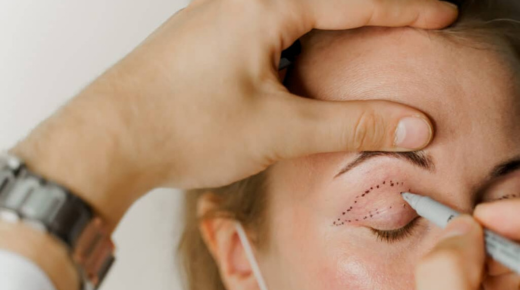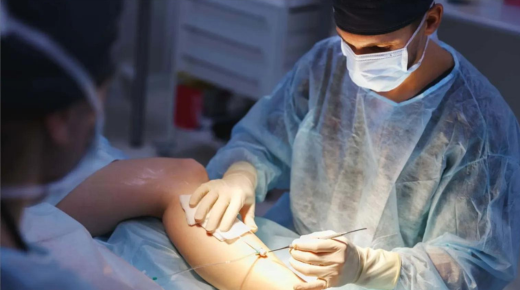1. Introduction to Upper Eyelid Surgery
Upper eyelid surgery, or blepharoplasty, is a cosmetic procedure to remove excess skin and fat from the upper eyelids, aiming to improve appearance and vision.
2. What is Botched Surgery
Botched surgery refers to a procedure that has resulted in undesirable outcomes, complications, or failed to meet the patient’s expectations.
3. Common Causes of Botched Surgery
Botched upper eyelid surgery can occur due to inexperienced surgeons, improper techniques, inadequate preoperative planning, or complications during the procedure.
4. Identifying a Botched Surgery
Signs of a botched upper eyelid surgery include asymmetry, excessive scarring, difficulty closing the eyes, dry eyes, and an unnatural appearance.
5. Impact on Vision
In severe cases, botched upper eyelid surgery can impair vision by causing eyelid malposition, which affects the ability to fully open or close the eyes.
6. Emotional and Psychological Effects
Patients who experience botched upper eyelid surgery may suffer from emotional distress, loss of self-esteem, and anxiety about their appearance.
7. Choosing the Right Surgeon
Selecting a qualified and experienced plastic surgeon with expertise in eyelid surgery is crucial to minimize the risk of complications and achieve satisfactory results.
8. Importance of Preoperative Consultation
A thorough preoperative consultation helps ensure that the surgeon understands the patient’s goals, assesses their suitability for surgery, and plans the procedure carefully.
9. Realistic Expectations
Setting realistic expectations about the outcomes of upper eyelid surgery can help prevent disappointment and ensure patient satisfaction with the results.
10. Surgical Techniques
Different surgical techniques, such as incisional or non-incisional methods, are used in upper eyelid surgery. The choice of technique depends on the patient’s anatomy and desired outcome.
11. Postoperative Care
Proper postoperative care, including following the surgeon’s instructions, using prescribed medications, and attending follow-up appointments, is essential for optimal healing and results.
12. Recognizing Complications Early
Early recognition and management of complications, such as infection, bleeding, or excessive swelling, can prevent further issues and improve outcomes.
13. Asymmetry Issues
Asymmetry, where the eyelids appear uneven, is a common concern in botched upper eyelid surgery. This can result from uneven tissue removal or healing.
14. Scarring and Tissue Damage
Excessive scarring and tissue damage can occur if the surgical incisions are not made or closed properly, leading to noticeable and unsightly marks on the eyelids.
15. Eyelid Malposition
Eyelid malposition, including ptosis (drooping) or retraction (pulling back), can result from improper tissue handling or excessive removal of skin and fat.
16. Revision Surgery
Revision surgery may be required to correct the issues caused by botched upper eyelid surgery. This involves additional procedures to adjust or repair the previous surgery’s outcomes.
17. Finding a Specialist for Revision
Finding a specialist experienced in revision eyelid surgery is essential to address the complications effectively and achieve the desired results.
18. Recovery Time
Recovery time for revision surgery can be longer than the initial procedure, and patients should be prepared for a more extended healing period.
19. Non-Surgical Options
In some cases, non-surgical treatments, such as laser therapy, fillers, or botox, may help improve the appearance and function of the eyelids after a botched surgery.
20. Importance of Follow-Up
Regular follow-up appointments with the surgeon are crucial to monitor the healing process, address any concerns, and ensure that the results are progressing as expected.
21. Patient Testimonials
Hearing from other patients who have undergone revision surgery can provide valuable insights and support for those facing similar issues after a botched procedure.
22. Legal Considerations
In cases where negligence or malpractice is suspected, patients may consider seeking legal advice to explore their options for compensation or corrective action.
23. Emotional Support
Emotional support from family, friends, or professional counselors can help patients cope with the psychological impact of a botched upper eyelid surgery.
24. Future Precautions
Taking precautions, such as thorough research and choosing a qualified surgeon, can help prevent botched surgeries in the future and ensure safer cosmetic procedures.
Botched upper eyelid surgery can have significant physical and emotional effects. Understanding the causes, recognizing complications early, and seeking appropriate treatment are crucial steps in addressing the issues and achieving satisfactory outcomes.




